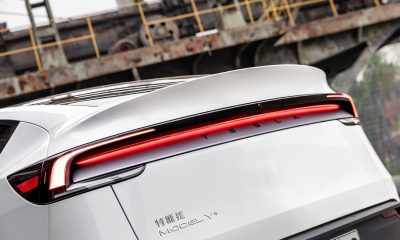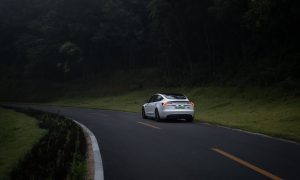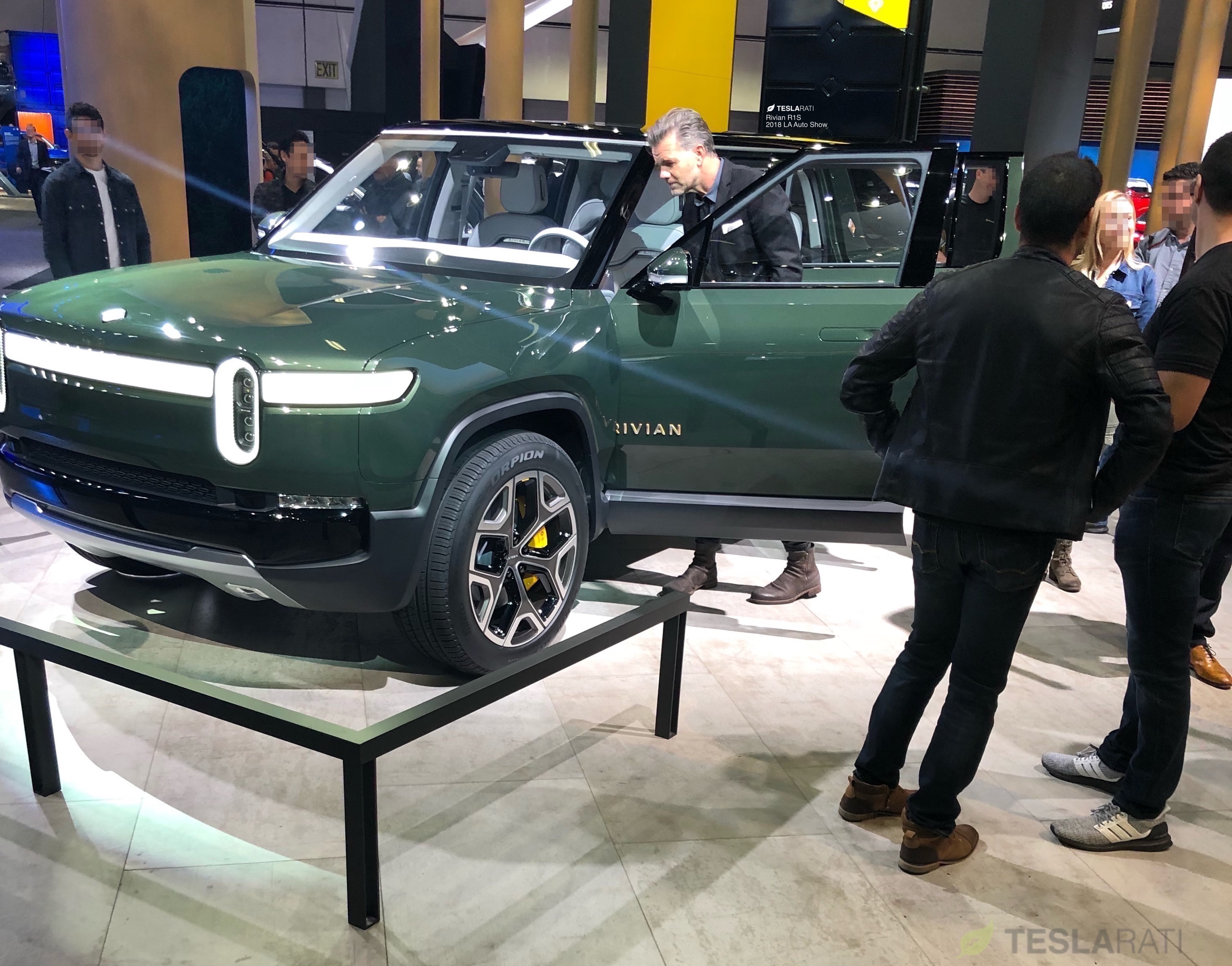

News
Rivian gets a surprise visit from Tesla Chief Designer Franz von Holzhausen
Rivian captured the attention of the automotive world when it debuted its quad-motor R1T all-electric pickup truck and R1S SUV in Los Angeles this week, including the attention of none other than Tesla Chief Designer Franz von Holzhausen.
Teslarati spotted the veteran automobile designer, and chief designer to the Tesla Model S, Model X, and Model 3, paying a surprise visit to Rivian’s LA Autoshow booth one day before the event is set to open its doors to the general public. Tesla also has a booth this year at the auto show where the company is showcasing its solar roof tiles, energy products, and its fleet of electric vehicles.
While Tesla executives including CEO Elon Musk have yet to make any public comments about Rivian’s launch, Von Holzhausen’s presence at their LA Autoshow booth and his visible interest in the R1S SUV can be interpreted as a sign that Tesla is taking the Michigan-based electric car startup seriously.
Tesla Chief Designer Franz von Holzhausen checks out Rivian’s new R1S SUV. (Photo: Teslarati)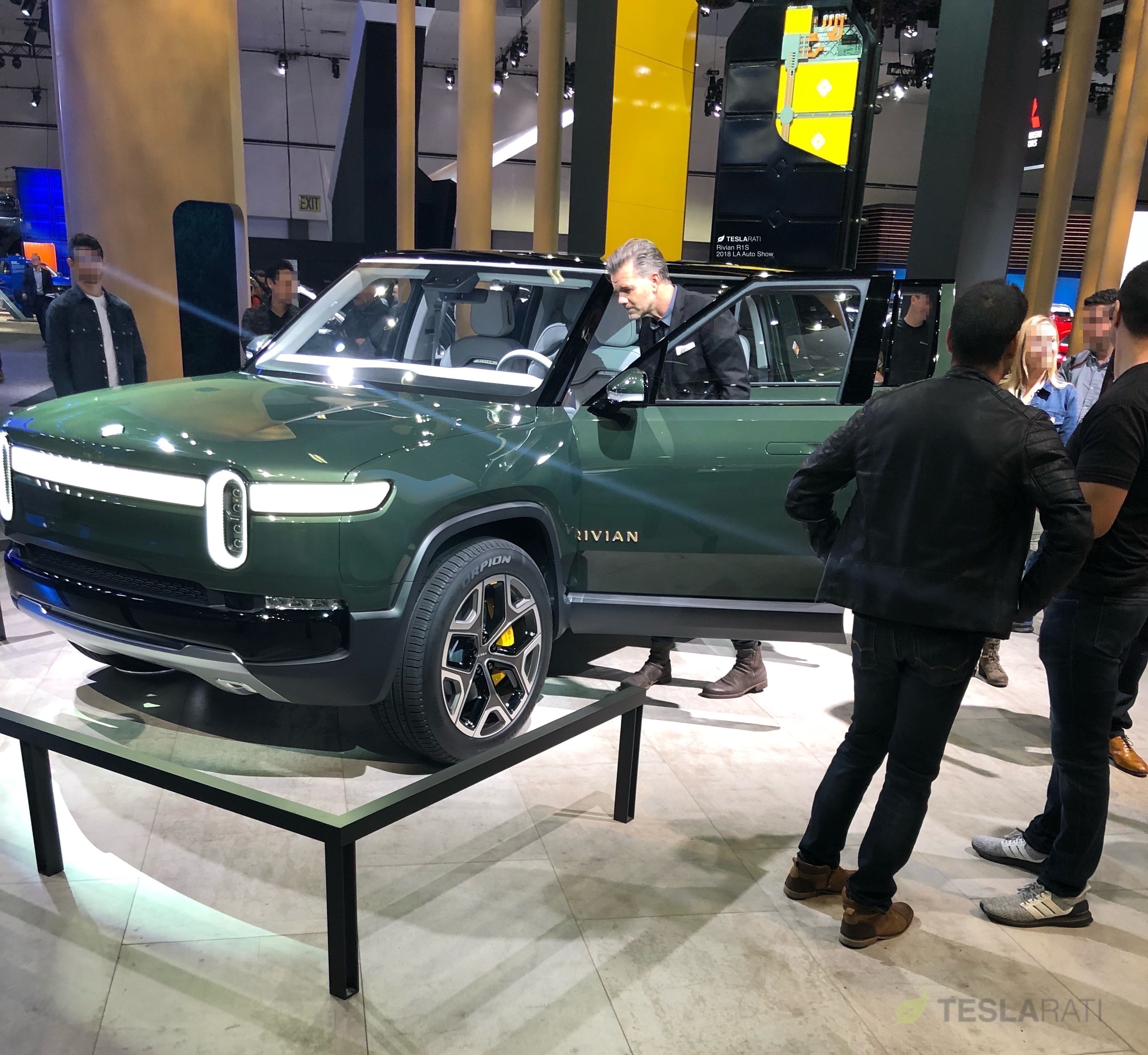
Rivian’s R1S design was led by Jeff Hammoud, who joined Rivian in May of 2017 as VP of Vehicle Design. Hammoud previously spent 13 years at Fiat Chrysler, where he was Chief of Design for the Jeep division. His most notable design during his tenure with Jeep was the Jeep Grand Cherokee. In addition to recruiting Hammoud from Jeep, Rivian also brought on Nick Malachowski as Director of Advanced Design.
“The R1T and R1S designs communicate strength and refinement while still inviting customers to get the vehicles dirty. Strong proportions and clean, continuous bodylines help achieve a modern, inviting stance while acknowledging the performance and level of technology integrated into the vehicles,” Rivian stated in a press release.
Details of the Rivian R1T and the Rivian R1S. (Credit: Christian Prenzler/Teslarati)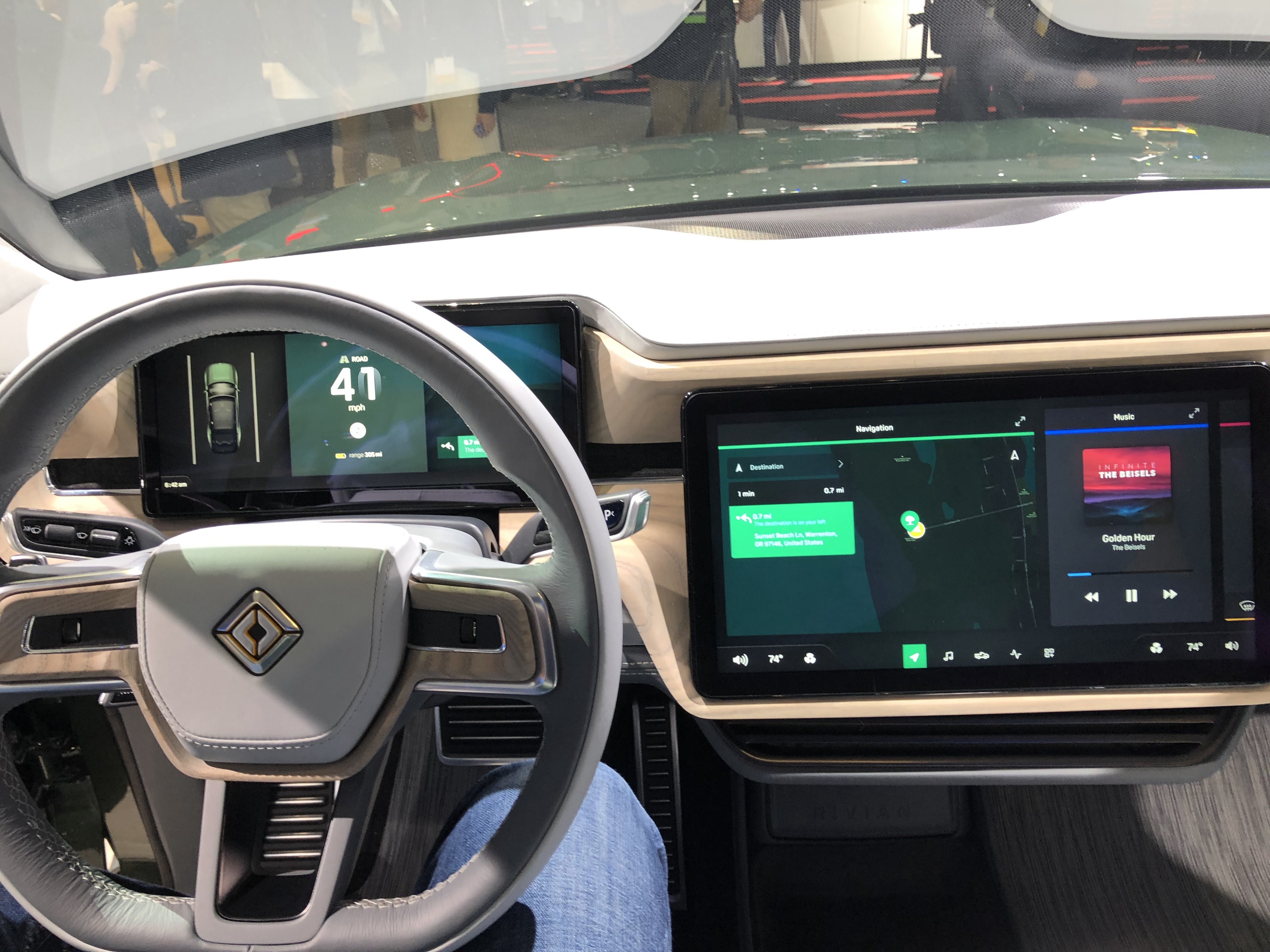
Although the design language between Tesla and Rivian may differ, Hammoud and Von Holzhausen both share in their passion to build and create something that would ordinarily just be a dream. And do so while being unbounded.
“The chance to be part of something like this from the ground up is the kind of opportunity you dream about,” Jeff Hammoud stated in a Rivian blog post.
“I’m looking forward to working at a new startup company that doesn’t have the confines of a large OEM,” Von Holzhausen told Car Design News when he joined Tesla in 2008.
Rivian’s R1S will go into production in the second half of 2020 and starts at $72,500. The R1S’s range is configurable between three battery pack variants: 105 kWh, 135 kWh, and 180 kWh, each providing 240, 310, and 410+ miles, respectively.
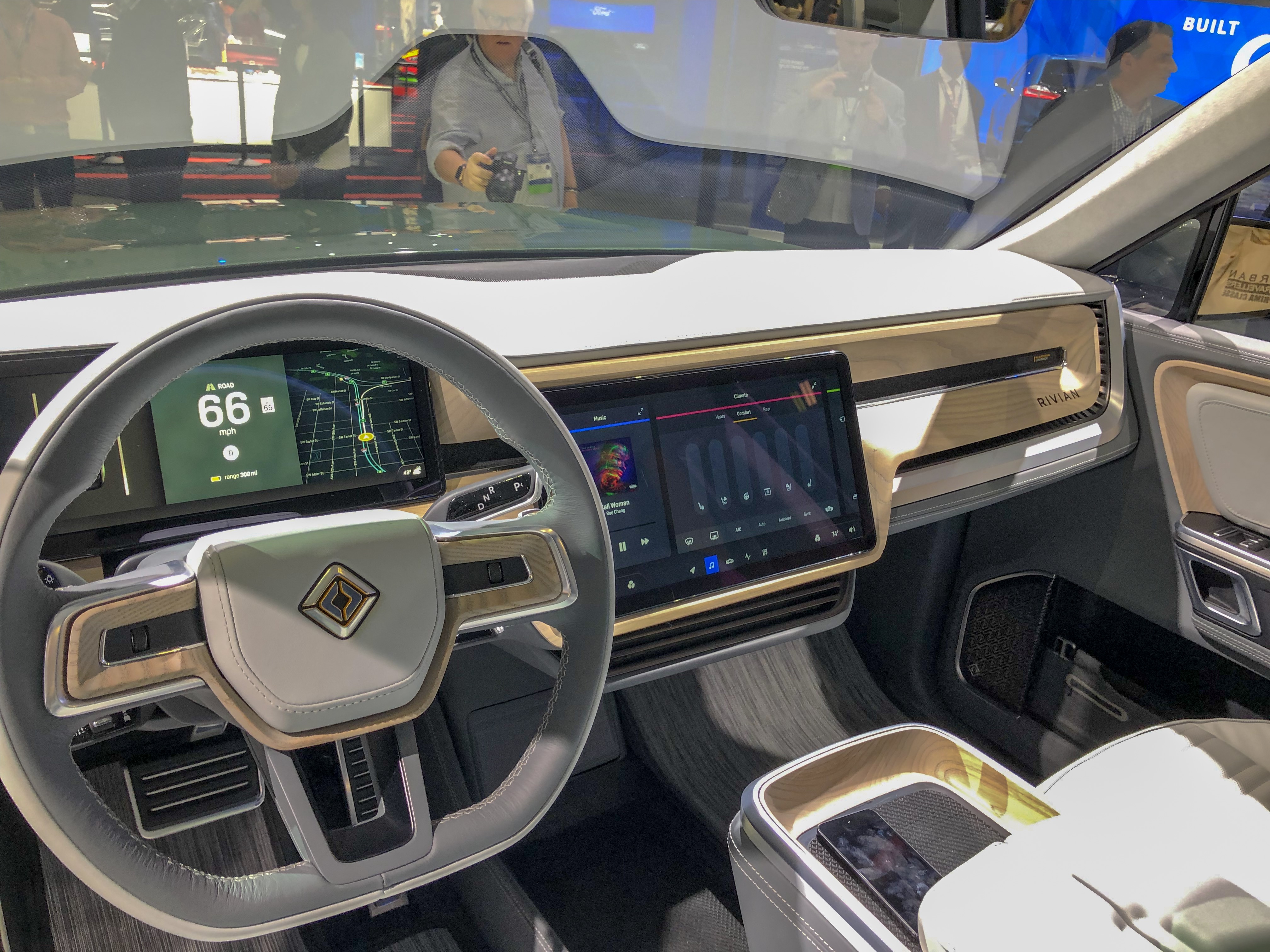
In addition to checking out Rivian’s SUV, Von Holzhausen also looked at Rivian’s R1T pickup truck that was also at the company booth. Rivian’s R1T is the first production electric truck to be revealed. Tesla is currently designing and developing their own electric pickup truck but has yet to disclose any information about its design, size, or pricing.
RELATED: Rivian R1T and R1S: Top 10 hidden features that make an electric off-road vehicle
The starting price for Rivian’s R1T begins at $69,000 and has the same battery pack configurations as the R1S. The company is expecting to produce roughly 50,000 of the R1T and R1S in their manufacturing plant in Normal, IL. Rivian has started to take preorders for both their vehicles with a $1,000 deposit.
Update: A spelling correction has been made to Rivian’s VP of Design, Jeff Hammoud.
Investor's Corner
Cantor Fitzgerald maintains Tesla (TSLA) ‘Overweight’ rating amid Q2 2025 deliveries
Cantor Fitzgerald is holding firm on its bullish stance for the electric vehicle maker.
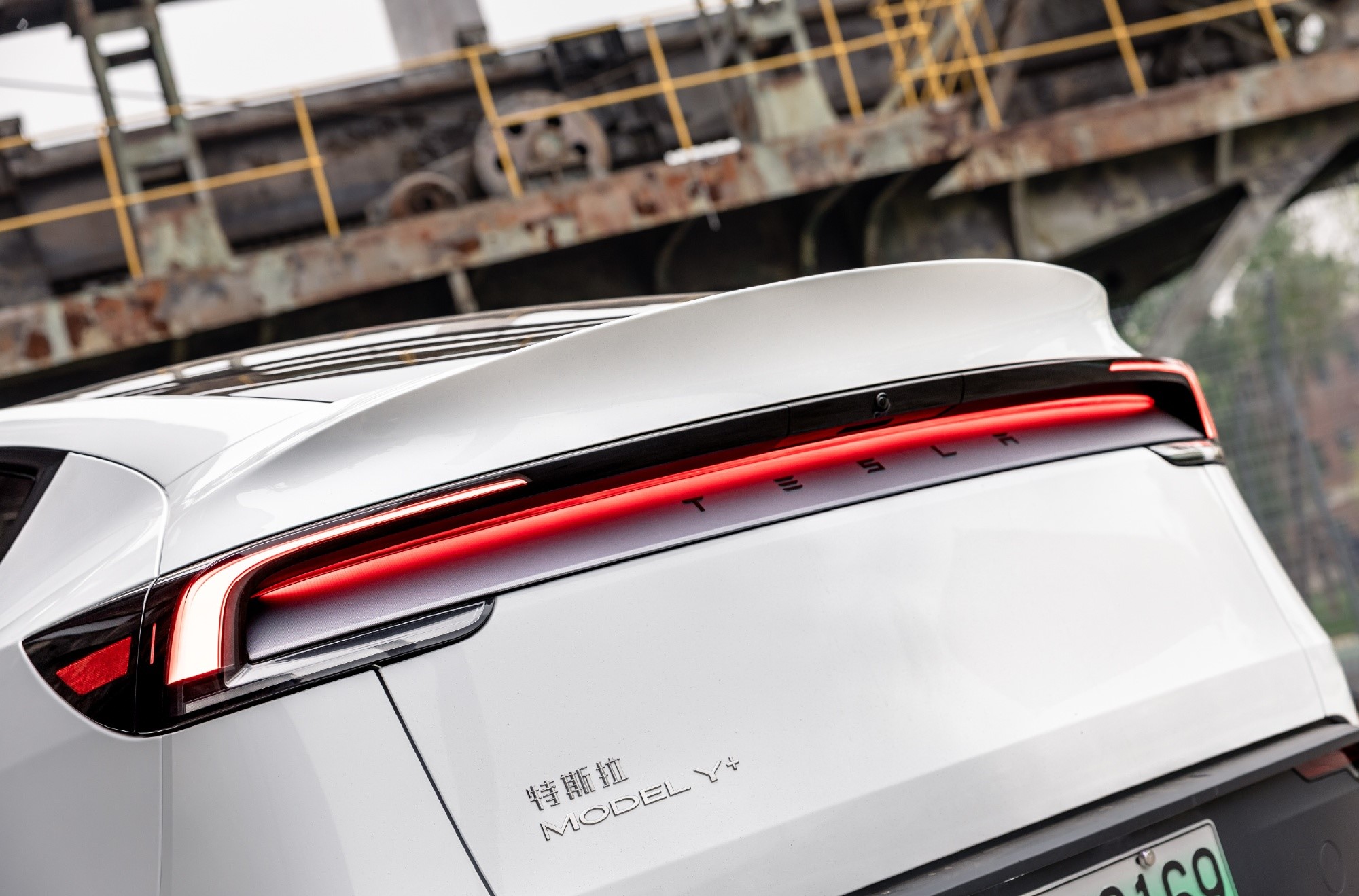
Cantor Fitzgerald is holding firm on its bullish stance for Tesla (NASDAQ: TSLA), reiterating its “Overweight” rating and $355 price target amidst the company’s release of its Q2 2025 vehicle delivery and production report.
Tesla delivered 384,122 vehicles in Q2 2025, falling below last year’s Q2 figure of 443,956 units. Despite softer demand in some countries in Europe and ongoing controversies surrounding CEO Elon Musk, the firm maintained its view that Tesla is a long-term growth story in the EV sector.
Tesla’s Q2 results
Among the 384,122 vehicles that Tesla delivered in the second quarter, 373,728 were Model 3 and Model Y. The remaining 10,394 units were attributed to the Model S, Model X, and Cybertruck. Production was largely flat year-over-year at 410,244 units.
In the energy division, Tesla deployed 9.6 GWh of energy storage in Q2, which was above last year’s 9.4 GWh. Overall, Tesla continues to hold a strong position with $95.7 billion in trailing twelve-month revenue and a 17.7% gross margin, as noted in a report from Investing.com.
Tesla’s stock is still volatile
Tesla’s market cap fell to $941 billion on Monday amid volatility that was likely caused in no small part by CEO Elon Musk’s political posts on X over the weekend. Musk has announced that he is forming the America Party to serve as a third option for voters in the United States, a decision that has earned the ire of U.S. President Donald Trump.
Despite Musk’s controversial nature, some analysts remain bullish on TSLA stock. Apart from Cantor Fitzgerald, Canaccord Genuity also reiterated its “Buy” rating on Tesla shares, with the firm highlighting the company’s positive Q2 vehicle deliveries, which exceeded its expectations by 24,000 units. Cannacord also noted that Tesla remains strong in several markets despite its year-over-year decline in deliveries.
News
Tesla Sweden responds to car magazine’s claims that Model 3 has deficient brakes
The company stated that it would be examining the two Model 3s that were used in the magazine’s test.
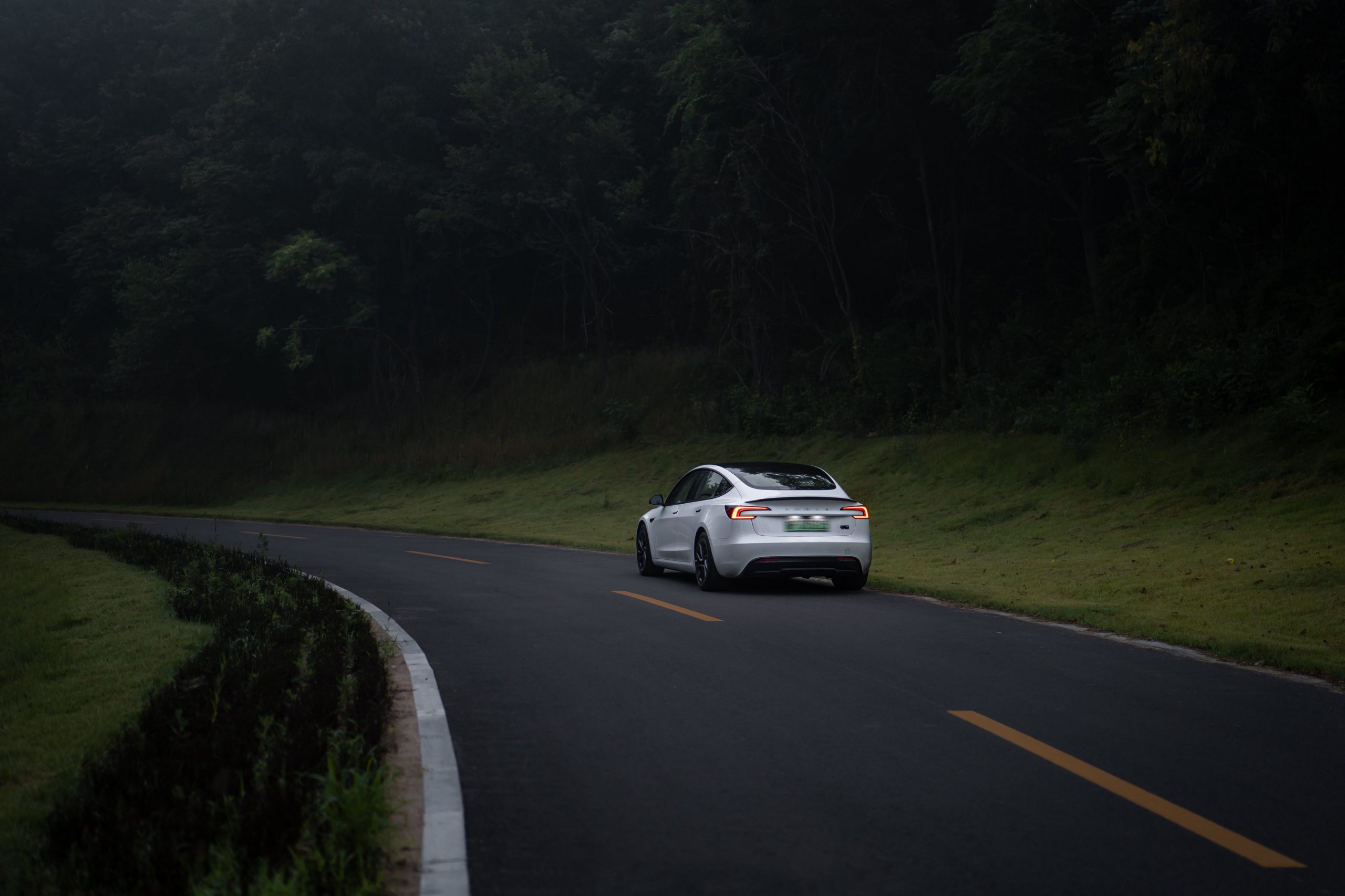
Tesla Sweden has responded to a car magazine’s claims that the new Model 3 sedan has “deficient” brakes. The all-electric sedan was subjected to the publication’s tests, and its braking distance was reportedly found to be lacking.
The car magazine’s tests
As noted in a report from Swedish car magazine Teknikens Värld, the new Model 3 Long Range’s braking distance proved subpar when it was tested, with the vehicle reportedly having a braking distance of a whopping 133.2 feet (40.6 meters). The magazine claimed that it repeated the test with another Model 3, and its results were only 5 feet (1.5 meters) better.
The magazine noted that this was unacceptable since an acceptable braking distance is 124 feet (28 meters), which also happens to be the Model 3’s braking distance when it was tested by Edmunds in the United States. The publication also stated that the Volkswagen ID.7 Tourer, which is equipped with drum brakes at the rear, had a braking distance that’s 16 feet (5 meters) shorter in its tests.
Tesla Sweden’s response
Tesla Sweden responded to the car magazine’s claims, stating that the all-electric sedan’s alleged braking performance was not consistent with the company’s data, nor does it align with the Model 3’s safety ratings. The company also noted that it would be examining the two Model 3s that were used in the magazine’s test.
“In the latest braking tests with Model 3, which were conducted by Teknikens Värld 2021, a braking distance of 36.5 meters was measured for Model 3 RWD and 36.7 meters for Model 3 Long Range AWD, so these results are not recognized or consistent with our internal tests.
“We are examining the two specimens to find out why the braking distances differ. Safety is number one at Tesla. Model 3 comes with all safety features as standard. Independent crash safety organization Euro NCAP recently announced new crash results for cars tested in May 2025. Euro NCAP gives the upgraded Model 3 a 5 out of 5-star safety rating and an overall score of 90%, making Model 3 one of the safest vehicles tested under the latest and most stringent testing protocol ever,” Tesla Sweden stated.
Teknikens Värld digs its heels
While Tesla Sweden has responded to its allegations, the car magazine noted that it will nonetheless stand firm on its claim that the new Model 3 has deficient brakes.
“The fact that the Model 3 previously passed the brake test is not relevant because today’s generation of the Model 3 is to be considered a new generation, as Tesla themselves often point out. Nor is the result in Euro NCAP relevant because they are different tests. We can therefore conclude that Tesla has deficient brakes on the new Model 3. It is good for everyone to know,” the car magazine wrote.
News
Trump pushes back on Elon Musk’s America Party, calls third-party move ‘ridiculous’
The clash marks a notable shift in the relationship between the two former allies.

United States President Donald Trump sharply criticized Elon Musk’s decision to launch a new political party, calling the move “ridiculous” and dismissing it as a distraction from the two-party system. The rebuke came shortly after Musk announced the formation of the “America Party,” aimed at disrupting what he calls the entrenched Republican-Democrat “Uniparty.”
Tensions escalate between Trump and Musk
The clash marks a notable shift in the relationship between the two former allies. Musk previously headed the Department of Government Efficiency (DOGE) under Trump’s administration, a position aimed at cutting federal spending. The alliance, however, appears to have fractured over policy differences, particularly Trump’s “Big Beautiful Bill,” which Musk notes will increase the country’s debt by $5 trillion.
Speaking to reporters on Sunday before boarding Air Force One, Trump said, “It’s always been a two-party system and I think starting a third party just adds to the confusion.” Hours later, he posted on Truth Social that Musk had gone “off the rails,” accusing him of promoting an “Electric Vehicle Mandate” that would have required all Americans to switch to EVs in a short timeframe.
Trump emphasized that his latest tax bill deliberately excluded incentives for electric vehicles, saying Americans should be free to choose gasoline-powered, hybrid, or other new technologies without federal mandates, according to a report from the BBC.
Musk outlines goals for America Party
Musk has been open about his support for ending the EV tax credit, as long as the incentives for other industries like oil and gas are removed as well.. The CEO has adopted this stance for several years. He has also not supported the idea of a mandate that forces consumers to purchase electric cars.
Musk also stated that the newly formed America Party will focus on congressional races in 2025 and 2026, rather than fielding a presidential candidate in the near term. In his post on X, the Tesla and SpaceX CEO criticized both major parties for contributing to the national debt. He also noted that the Department of Government Efficiency’s work will be rendered useless if the US’ debt increases due to Trump’s Big Beautiful Bill.
-

 Elon Musk1 week ago
Elon Musk1 week agoTesla investors will be shocked by Jim Cramer’s latest assessment
-

 News2 weeks ago
News2 weeks agoTesla Robotaxi’s biggest challenge seems to be this one thing
-

 News2 weeks ago
News2 weeks agoWatch the first true Tesla Robotaxi intervention by safety monitor
-

 Elon Musk1 week ago
Elon Musk1 week agoA Tesla just delivered itself to a customer autonomously, Elon Musk confirms
-

 News2 weeks ago
News2 weeks agoTesla Robotaxi rollout proves that Elon Musk still delivers, even if it’s late
-

 Elon Musk2 weeks ago
Elon Musk2 weeks agoxAI welcomes Memphis pollution results, environmental groups push back
-
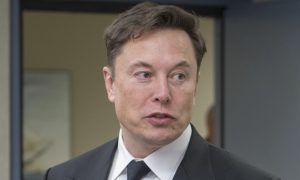
 Elon Musk2 weeks ago
Elon Musk2 weeks agoElon Musk commends Tesla team on successful Robotaxi launch
-

 Elon Musk2 weeks ago
Elon Musk2 weeks agoElon Musk confirms Tesla Optimus V3 already uses Grok voice AI


